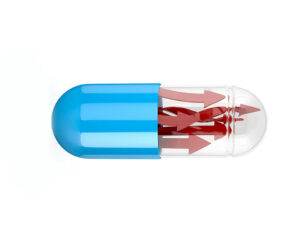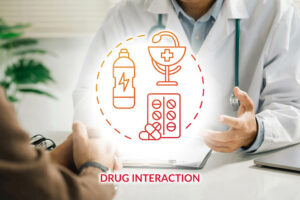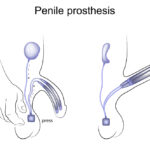Oral Medications for ED – An Overview
When seeing a urologist for erectile dysfunction (ED), many men ask about oral medications (pills that can be taken by mouth).
These drugs have been a major force in erectile dysfunction treatment for over two decades. Sildenafil (brand name Viagra®) was the first to be approved by the U.S. Food and Drug Administration (FDA) in 1998. Tadalafil (Cialis®) and vardenafil (Levitra®) followed; both drugs were approved in 2003. The FDA approved the fourth ED drug, avanafil (Stendra®) in 2012.

All of the drugs are classified as phosphodiesterase type 5 (PDE5) inhibitors, and they work in similar ways. Many men find them effective and convenient.
Still, they’re not right for every man, and there are differences among them that men should be aware of.
How do oral ED drugs work?
There are differences among oral medications for ED that men should be aware of.
For a man to get an erection, muscles in the penis need to relax so that blood can flow in during sexual stimulation. As the penis fills with blood, it becomes firm and erect. A chemical called nitric oxide, which is naturally produced by the body, helps this process along.
The four oral ED drugs help nitric oxide do its job so that the penis muscles can relax and let the blood in.
ED drugs do not create an erection automatically, however. A man still needs sexual stimulation to achieve an erection.
How are oral ED drugs similar?
Oral ED drugs share these similarities:
In the United States, they are available by prescription only.
ED drugs are not sold over the counter, and men need a doctor’s prescription to obtain them.
It’s important for men to see a doctor when they start having trouble with erections. ED can be a sign of health conditions like diabetes and heart disease. If these conditions are found, they can be treated along with the ED.
ED can be a sign of health conditions like diabetes and heart disease.
ED drugs don’t increase sexual desire.
ED drugs allow blood to flow into the penis more easily to create an erection, but they do not affect sexual desire. Men need to have the drive for sexual activity as well as sexual stimulation for the drugs to work.
ED drugs don’t prevent pregnancy or lower risk for sexually transmitted infections.
Couples still need to use contraceptives and follow safe sex practices, like using condoms and dental dams.
ED drugs have some side effects in common.
The 4 ED drugs do share some mild side effects, such as headache and flushing.
They also have some more serious side effects in common. If any of these symptoms occur, patients should seek emergency medical care:
- An erection lasting longer than 4 hours
- Sudden loss of vision
- Sudden loss of hearing
- Ringing in the ears
- Dizziness
- Swelling of the face, mouth, throat, hands, feet, or legs
However, other side effects may be different for each drug:
Avanafil
Mild side effect:
- Back pain
Side effects that need emergency care:
- Rash
- Itching
Sildenafil
Mild side effects:
- Heartburn
- Diarrhea
- Nausea
- Nosebleeds
- Numbness or tingling in the limbs, hands, or feet
- Pain in muscles, back, or limbs
- Changes in color vision, such as a blue tinge or trouble seeing the difference between blue and green
- Sensitivity to light
- Nasal congestion
Side effects that need emergency care:
- Blurred vision
- Fainting
- Chest pain
- Shortness of breath
- Rash, itching or hives
- Difficulty breathing or swallowing
Tadalafil
Mild side effects:
- Heartburn
- Nausea
- Diarrhea
- Pain in the muscles, back, arms, legs, or stomach
- Coughing
Side effects that need emergency care:
- Blurry vision
- Changes in color vision, such as a blue tinge or trouble seeing the difference between blue and green
- Chest pain
- Hives, rash, blisters, or peeling skin
- Difficulty breathing or swallowing
Vardenafil
Mild side effects:
- Nausea
- Heartburn
- Stuffy or runny nose
- Flu-like symptoms
Side effects that need emergency care:
- Blurry vision
- Changes in color vision, such as a blue tinge or trouble seeing the difference between blue and green
- Hoarseness
- Difficulty breathing or swallowing
- Fainting
- Hives or rash
Patients should note that some side effects are more common with specific drugs. For example, men who take sildenafil may be more likely to experience a blue/green tinge to their vision than men who take tadalafil. And men who take tadalafil may be more likely to have muscle pain (myalgia) than men who take sildenafil.
A man’s doctor can best advise on the likelihood of certain side effects and how they might affect a man’s personal situation.
ED drugs are not safe for all men.
Men who take drugs containing nitrates should not take ED medications. This combination can cause a dangerous drop in blood pressure. Some examples of nitrates are nitroglycerin, isosorbide mononitrate, and isosorbide dinitrate. Nitrates are prescribed to prevent or treat chest pain related to heart disease.
ED drugs are also not appropriate for men with low blood pressure, uncontrolled high blood pressure, and severe liver disease. Men who are on dialysis for kidney disease should also not take ED drugs.
Men who take alpha blockers for enlarged prostate symptoms may need to space out their doses of these drugs and ED drugs to avoid an interaction.

Men should always tell their doctor about any other medications, street drugs, herbs, or supplements they use. These products may interact with ED drugs.
In addition, men should let their doctor know if they typically eat grapefruit or drink grapefruit juice, as this combination may cause an interaction as well.
How are oral ED drugs different?
Dosing may be different.
Sildenafil, avanafil, and vardenafil are taken on an as-needed basis, meaning a man takes them before he wishes to have an erection. Tadalafil may also be taken this way, but some prescriptions call for it to be taken every day. Men should be sure to take their medicine as directed.
The time between taking the drug and getting an erection may vary.
ED drugs do not produce an erection immediately. It takes some time for the drug to work, and these time frames vary by medication. For example, men usually get an erection about 30 to 60 minutes after taking sildenafil or vardenafil. Men who take tadalafil as needed (not daily) may need to wait 30 to 45 minutes. For those who take avanafil, the wait may be 15 to 30 minutes.
They last for different durations.
ED medications also vary in how long they are effective. For example, once sildenafil or vardenafil take effect, a man might be able to get an erection for four to five hours. For avanafil users, the time frame is about six to twelve hours. Tadalafil has the longest effective time—usually 24 to 36 hours for as- needed users. Men who take tadalafil daily should be able to get an erection at any time.
Which ED drug should a man choose?
When prescribing ED drugs, doctors take many factors into account. They consider a man’s overall health and the drugs and supplements he currently takes.
Sometimes, it takes time to find the most effective ED drug. These medications have been shown to be quite effective, but results vary from man to man. If a particular drug doesn’t work as well or has bothersome side effects, a man’s doctor may prescribe a different drug or suggest a different ED treatment.
It’s important to remember that in the United States, ED drugs are available only by prescription. Men may see online advertisements for non-prescription products that claim to improve erectile function. But these claims are often misleading, and taking such products could be dangerous. (Learn more about sexual enhancement supplements here.)
Resources
American Urological Association
Burnett, Arthur L., MD
“Erectile Dysfunction: AUA Guideline (2018)”
(2018)
https://www.auanet.org/guidelines-and-quality/guidelines/erectile-dysfunction-(ed)-guideline
Harvard Health Publishing / Harvard Medical School
“Which drug for erectile dysfunction?”
(August 9, 2022)
https://www.health.harvard.edu/mens-health/which-drug-for-erectile-dysfunction
Mayo Clinic
“Erectile dysfunction: Viagra and other oral medications”
(December 20, 2022)
https://www.mayoclinic.org/diseases-conditions/erectile-dysfunction/in-depth/erectile-dysfunction/art-20047821
MedlinePlus
“Avanafil”
(Last revised: February 15, 2017)
https://medlineplus.gov/druginfo/meds/a614010.html
“Sildenafil”
(Last revised: April 15, 2023)
https://medlineplus.gov/druginfo/meds/a699015.html
“Tadalafil”
(Last revised: April 15, 2023)
https://medlineplus.gov/druginfo/meds/a604008.html
“Vardenafil”
(Last revised: January 15, 2022)
https://medlineplus.gov/druginfo/meds/a603035.html
National Institute of Diabetes and Digestive and Kidney Diseases
“Treatment for Erectile Dysfunction”
(Last reviewed: July 2017)
https://www.niddk.nih.gov/health-information/urologic-diseases/erectile-dysfunction/treatment
The Pharmaceutical Journal
Connelly, Dawn
“Three decades of Viagra”
(May 25, 2017)
https://pharmaceutical-journal.com/article/infographics/three-decades-of-viagra




